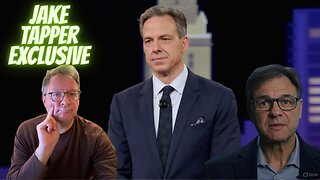Premium Only Content

The Anatomy of a Sermon: How Recognizing Good Preaching can Help Identify a Good Pastor
This lecture is designed to help churches that are currently in the process of seeking a new pastor by providing criteria for evaluating the preaching of candidates. It should also be helpful for those desiring to improve their preaching and teaching. Since one of a pastor’s main responsibilities is preaching (Eph. 4:11–13; 1 Tim. 5:17) and since most of the congregation only gets to choose their pastor primarily based on hearing 2–3 sermons, then it is important to recognize good preaching to identify a good pastor. The evaluative criteria in this video will not only help the congregation at large, but will also help the search committee members to assess candidates and to develop interview questions related to preaching. Knowing the difference between a sermon, a speech, and a seminary lecture is the first step toward recognizing good preaching. The thesis of the lecture is that recognizing good preaching will help one to identify a good pastor. The presentation develops the thesis by dividing preaching into two main steps: preparation and presentation. It then covers the homiletic areas of sermon preparation including the structure, content, and delivery of sermons from the perspective of evaluating a candidate’s ability to preach and suitability for a particular church. It closes by considering how the preparation area of the candidate’s character (prayer and virtuous life, 1 Tim. 4:16) is reflected in the following sermon elements: the opening and closing prayer, the explanation of the passage (observation and interpretation), illustration, and application.
-
 56:38
56:38
DeProgramShow
2 days agoDeprogram with Ted Rall and John Kiriakou: "Jake Tapper on the Global Hunt for an Al Qaeda Killer”
27.4K6 -
 16:30
16:30
GritsGG
2 days agoWarzone's New Zombie Royal Mode is AWESOME!
3.21K2 -
 1:43:07
1:43:07
The Michelle Moore Show
3 days ago'The 12 Open Doors' Guest, Steve Jarvis: The Michelle Moore Show (Oct 17, 2025)
35.2K13 -
 30:55
30:55
TruthStream with Joe and Scott
7 days agoTruthStream in Ireland, Rebels Across the Pond, Bono discussed, with Freedom Now Acoustic from a Pub
7.2K12 -
 3:12:34
3:12:34
Badlands Media
1 day agoThe Narrative Ep. 43: Unity.
346K82 -
 2:43:11
2:43:11
TheSaltyCracker
9 hours agoWe Kill You Rally ReeEEStream 10-19-25
93.9K246 -
 7:54:17
7:54:17
Putther
14 hours ago $27.55 earned🔴LAZY SUNDAY STREAM!! (GTA + MORE)
77K12 -
 10:38
10:38
Colion Noir
8 hours agoHe Installed a Forced Reset Trigger at a Gun Range… and Got Arrested | What You Need to Know
59.8K23 -
 1:29:26
1:29:26
HELMETFIRE
7 hours ago🟢GAMING WITH FIRE EP13🟢
31.3K5 -
 50:40
50:40
Sarah Westall
9 hours agoAI, Social Media & Brain Atrophy: Destroying Human Capacity to Think w/ Rob Smith
37.1K12